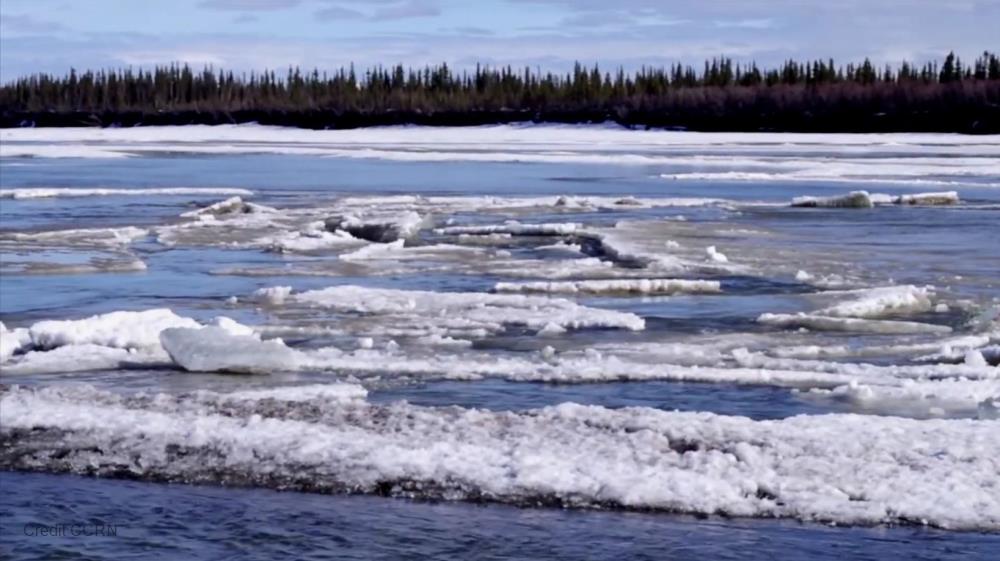
Related items loading ...
Section 1: Publication
Publication Type
Conference Poster
Authorship
Tesemma Zelalem, Pomeroy John, Pietroniro Alain
Title
Modelling highly disturbed basins: the Upper Columbia and Okanagan River Basins
Year
2022
Publication Outlet
AOSM2022
DOI
ISBN
ISSN
Citation
Zelalem Tesemma, John Pomeroy, Alain Pietroniro (2022). Modelling highly disturbed basins: the Upper Columbia and Okanagan River Basins. Proceedings of the GWF Annual Open Science Meeting, May 16-18, 2022.
Abstract
The Upper Columbia and Okanagan River basins are important mountain headwaters to provide biodiversity and ecosystem services and to supply water for hydropower dams and reservoir operations in British Colombia, Canada, and the northwest United States. However, the impact of forest disturbance by forest harvesting, disease, and wildfire and then recovery, and deglaciation on the basin hydrology has not been thoroughly studied. The impact of largescale forest disturbances in the basin on the magnitude of recent flooding has not been fully investigated. This study aims to develop a methodology to simulate forest disturbance and regrowth in a hydrological land surface model and then use the model to investigate the impact of forest disturbance on the basin hydrology. An enhanced version of MESH (Modélisation Environnementale communautaire - Surface Hydrology) that incorporated mountain hydrology and vector base routing was setup over a total of 2177 model sub-basins; 1822 for the Upper Columbia and 355 for the Okanagan and Similkameen River basins. Subbasin areas range from 0.005 to 366 km2. The Global Multiscale Model (GEM) with precipitation replaced by the Canadian Precipitation Analysis (CaPA) (~10 km), version RDRS v2 meteorological forcings were used to drive the model. As forest and glaciers are important to the hydrology of the study basin, a particular attention was given in the basin discretization to these. Glaciers were grouped into three classes based on elevation band: high, mid, and low elevation glacier and the albedo value of the three classes were separately computed from the available MODIS albedo remote sensing data. Forests were segregated into four classes based on their species into Hemlock, Fir, Pine, and Spruce. In addition, forest harvesting, regrowth and wildfire were treated separately from mature forest. The wildfire areas were variable from year to year but parameterized in a similar way as barren land. However, forest harvesting, and regrowth were further segregated into three groups by age as Fresh Clear-cut, Clear-cut up to 5 years old and Clear-cut aged 5 years and above and parametrized using MODIS LAI data. The methodology developed to model forest disturbance and regrowth is innovative in a continental scale hydrological model. The preliminary results of the forest disturbance and regrowth model in MESH will be demonstrated.
Plain Language Summary
Section 2: Additional Information
Program Affiliations
Project Affiliations
Submitters
|
Zelalem Tesemma | Submitter/Presenter | zelalem.tesemma@usask.ca | University of Saskatchewan |
Publication Stage
N/A
Theme
Hydrology and Terrestrial Ecosystems
Presentation Format
poster presentation
Additional Information
AOSM2022 GWF Core Modelling First Author: Zelalem Tesemma, Centre for Hydrology, University of Saskatchewan, Saskatoon Additional Authors: John Pomeroy, Alain Pietroniro, Centre for Hydrology, University of Saskatchewan, Saskatoon


 GWFNet
GWFNet Master
Master Data
Data Research
Research Map
Map
 Advanced
Advanced Tools
Tools
 . . .
. . .
 Metadata Editor
Metadata Editor
 Record List
Record List
 Alias List Editor
Alias List Editor
 Legacy sites
Legacy sites